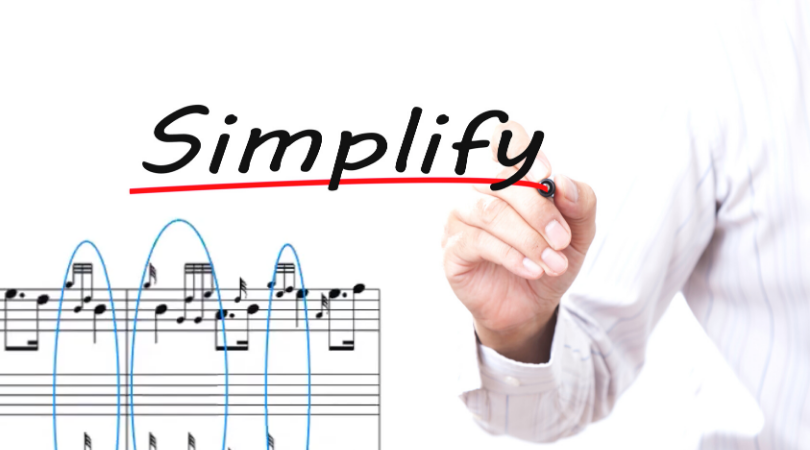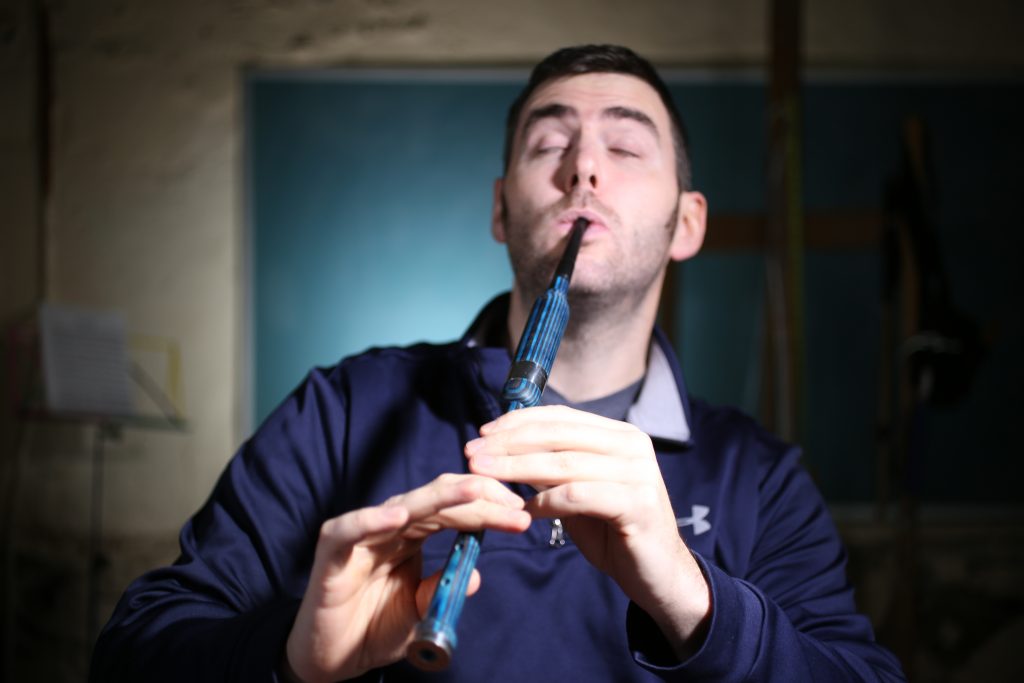Correctly Simplify any Tune

Being able to properly simplify a tune on your own is a vital skill for any piper who wants to (expediently) get better.
Unfortunately, bad simplification practices happen too often in piping circles, and this results in players learning bad habits, and in not being able to easily transition from a simplified version of a tune to its full version.
Meanwhile, the key to good simplification is that it should logically (and correctly) follow “learning layer” logic. Instead of trying to type it all out and explain it, let’s just use a tune to get our hands dirty.
Here is the first line of a complex march called “Donald MacLellan of Rothesay”

Let’s break this down into layers now. Any one of our layers can be excellent practice tools for us as we develop our playing.
A Note on “Monotone” Simplification
First of all, let’s mention that the most basic simplification layer is to simply rewrite the tune in “rhythm only” or “monotone” form. Simply strip out all gracenotes, embellishments AND notes.
Original:

Monotone:

To play this, we will simply clap/tap/vocalize the rhythms, and not worry about the notes.
Simplification Step 1: Pitches Only
This is a process layer only. We will NOT play the tune in this form (99% of the time).
When simplifying, an important first step is to completely strip out all gracenotes and embellishments.
Original:

Pitches Only:

This gives us a “clean slate” to work with as we add in the proper simple gracenoting in the next step.
For now, can you see how this isn’t exactly playable? We won’t be able to repeat any of these notes without at least some form of simple gracenoting to help us out.
Simplification Step 2: G Gracenote Layer
Step two is to add in some basic gracenotes. But which ones? The answer is easy. G Gracenotes will come first.
For this layer we are going to:
- Add back in all High G Gracenotes (including the G Gracenotes inside of embellishments).
- Replace Taorluaths, Grips, Throws and Birls with G Gracenotes.
Original:

G Gracenote Layer:

See how easy that is?
This is now playable! You can get a ton out of mastering the G Gracenote layer of any tune. Also, you will build a foundation for the next layer of our tune building onion…
Simplification Step 3: Supporting Gracenotes
As we learn in the Dojo Beginner’s Tutor and in our Fingerwork Fundamentals Course, gracenotes have three “priority tiers.”
Tier One is G Gracenotes. Tier Two is D Gracenotes. Tier Three is E Gracenotes and/or Strikes.
The next step of our simplification process is to add in supporting gracenotes to our previous layer, making sure not to violate the tier structure I listed above.
In this case, there’s only a couple supporting gracenotes to worry about:
Original:

Supporting Gracenote Layer:

Can you see how we still don’t have any embellishments, but the supporting gracenotes (a few D gracenotes in this case) have been added in?
Simplification Steps 4 through ?: Embellishment Layers
It’s important to add in embellishments gradually to your tune, so you don’t become overwhelmed with too much to think about.
I like to add in the “most important” embellishments first. What are the most important embellishments? The ones that add the most musically to our tune.
Have a look at the original setting of the tune. What do you think are the most important embellishments?
Original:

For me, the taorluath and grip are the most important embellishments here. The doublings are great, but not as central to the music as these Low G movements.
So, my first layer of embellishments might look like this:

Keep in mind, it’s totally up to you if you’d like to add in different embellishment types in different orders. The important thing is that you keep your focus singular, and avoid overwhelm at all costs.
Supplemental Materials
This class is a great walk-through of these concepts. Click here now.






The minnows and worms are bait I simply can’t resist but the supplemental materials are too big for me now while I’m trying to navigate the orientation. I hope I’ll be able to find my way back to this pond later.
Haha - yes, Dojo U has endless rabbit holes. Staying focused can be the biggest challenge! 🙂